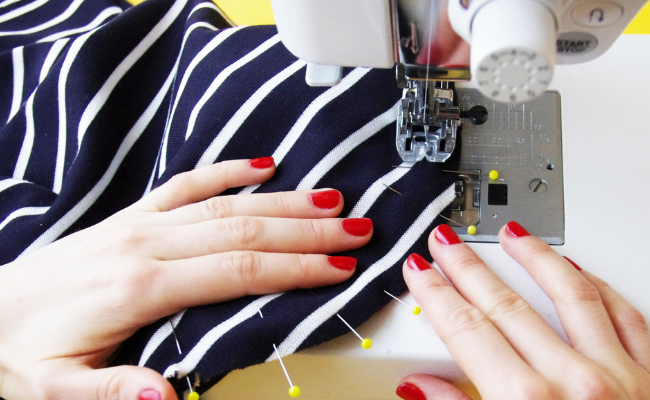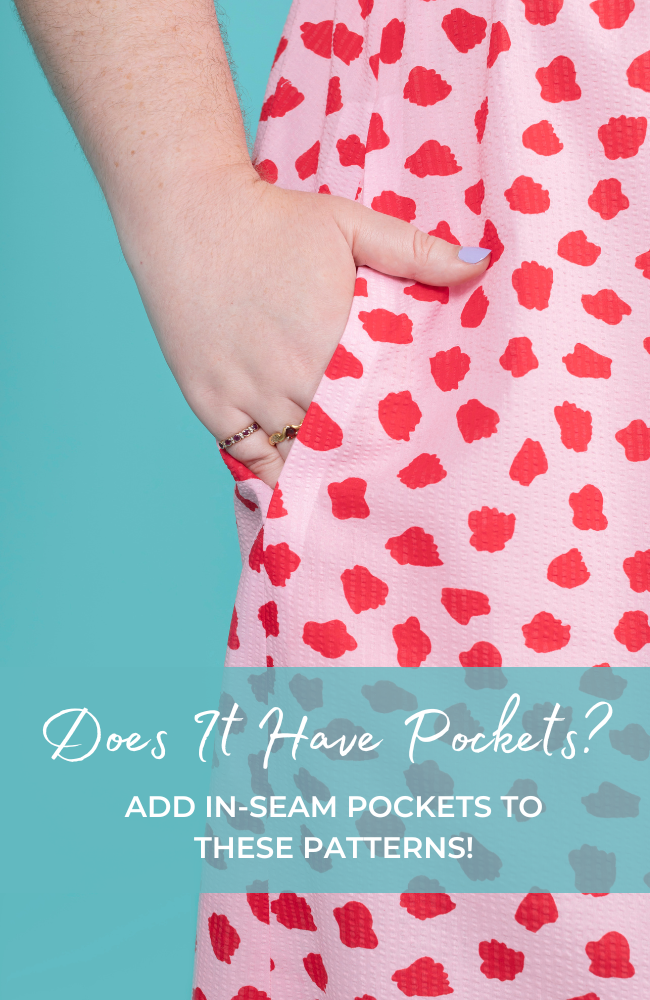

Can I sew knit fabrics on a regular sewing machine?





If you’ve got a couple of sewing projects under your belt, you’ve likely come across interfacing. Let's look at what interfacing is, how to use it, and our top tips for sewing with it.
Interfacing is a stiffening material used in sewing to add extra structure or firmness to certain areas of a garment – such as cuffs, button plackets, collars and waistbands.
It is applied to the wrong side of the fabric (it’s usually the first step in sewing pattern instructions) and isn’t visible on the finished garment.
You can get lots of different types of interfacing – iron-on or stitch-in; woven, non-woven or knit; black or white; light-weight to heavy-weight; designed for stretch or woven fabrics; in pre-cut packs or sold by the metre or yard.
Which one you choose will depend on what fabric you’re using for your project – the main thing is to ensure is that the interfacing is a similar weight to the fabric you’re using so that it adds firmness but doesn't make it too stiff.
Hunt around for variety of interfacings that you like – they’re always useful to have to hand. I generally keep a stash of light-weight, medium-weight and heavy-weight interfacing so I’ve always got something to match what I’m making. It's also useful to have some stretch interfacing if you regularly make garments in knit fabrics.
Iron-on - or "fusible" - interfacing is the easiest to use, unless the fabric that you're using is more suited to a sew-in material. If you’re using sheer fabrics, which interfacing would show through, you can attach a layer of fine fabric such as organza instead.

To apply iron-on or fusible interfacing:
Now you know what interfacing is and how to use it, here are five tips for interfacing like a pro...

With a hot, dry iron, when applying the interfacing, try not to move the iron back and forth - instead use an up-down motion so you don't squidge up the interfacing while the glue is melting.

The age-old sewing question... does it have pockets?
We're big lovers of pockets here at Tilly and the Buttons, but what if the pattern you've picked out doesn't include them? Where are you supposed to hide your snacks, or how can you pose nonchalantly with your hands? Don't worry, sewists, we've got you covered with our free in-seam pocket pattern download which you can add to any suitable sewing project with a side seam!
Open the pattern in Adobe Reader and print the pattern piece actual size / 100% scale on A4 or Letter size paper. Make sure you bookmark the video below or follow along with the steps in our blog post to sew yours.
Insert these pockets into your garment before you start sewing the pieces together. To decide where you want the pockets to sit – hold up the front fabric piece of your sewing project to your body, imagine putting your hands in the pockets, and mark with pins where the top of the pocket openings will fall on the side seams. Mark the same position on the back fabric piece. Simple!
Here's a round-up of inspiration for using your new best friend of a pattern piece...

PJs are a great place for pockets - fact! To keep the construction of these pyjama bottoms as simple as possible for newbie sewists, our Jaimie PJs sewing pattern doesn't include pockets. But if you're practising your sewing and fancy tackling pockets, it's nice and easy to add them to Jaimie.

Sewing to a deadline? Practising for the Sewing Bee?! Or maybe you just don't have much free time to sew and want to see quick progress with your projects...
I know the feeling for all of the above! So I'm a fan of time-saving techniques when it comes to sewing.
Want to know my NUMBER ONE tip for speedy sewing? Find out in the video...
In the video, I'm wearing my needlecord Erin dungarees, AKA our unofficial TATB uniform - at least half the team have an almost identical pair now!